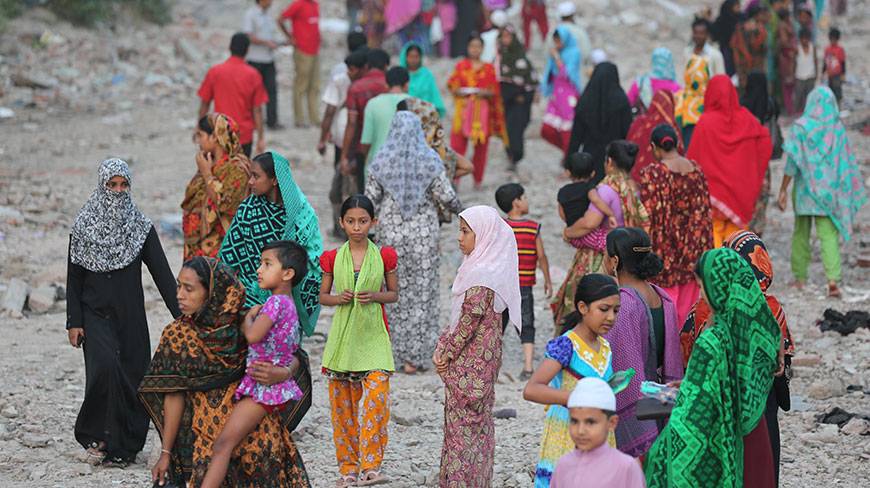The majority of the victims have not received much compensation, and are suffering
Twenty-fourth April, 2013 was perhaps the saddest day in the history of modern Bangladesh. On that fateful day, people in Bangladesh woke up to hear that in Savar, on the outskirts of the capital Dhaka, a building which housed five readymade garment factories, had caved in, with thousands of people, mostly workers, stuck inside. The next few days saw complete mayhem, with corpses being found from under the rubble, injured people being rescued, and it seemed the country was not well equipped for such massive rescue operation. Soon the authorities took over rescue operations. In the end, the official death toll was 1,134, with 2,515 injured being rescued alive. Many were not found at all.
The incident shook not only Bangladesh, but the whole world, given the fact that the RMG factories in Bangladesh supplied clothes to many of the world’s top brands based in North America, Europe, Australia, and Japan. The million dollar question was: Who was to blame for the ill fate of the poor workers? Was it the corrupt government officials, the inspectors who allowed such a building, with violations of almost all building codes, to exist?
Or was it the factory owners who put heavy machinery in such a weak building, and also, forced workers to continue working even after it become too risky to work there? Or the owner of the building, Sohel Rana, who went on making storey after storey with only profit in mind, with not enough foundation, and violating almost all building codes? Or the big brands like Primark, Walmart, Matalan, Benetton, and Mango, who bought clothes from these factories with little knowledge about the working conditions of the workers?
Or, was it the customers in the West to blame, who were the end users of these products? Whoever is to blame, it does not matter much to the people who are suffering immensely because of what happened.
It matters little whose fault it exactly is for Shushanto Kumar Das, whose daughter Sheuli Rani Das died in the tragic incident. She was the primary bread-earner of the family and after her death, the family received little, if any, compensation. Whose fault it actually is matters little to Laboni Khanam, whose left hand had to be cut off after she was rescued from the rubble.
Although the victims – the injured workers and families of the dead – received some financial support from different government and non-government organisations from both home and abroad, a major portion has been spent for medical purposes, with many still left not rehabilitated.
Many of the families have fallen into debt – unable to pay back and living lives of hardship. According to ActionAid Bangladesh, two-thirds of the 1,436 survivors are finding it very difficult to make ends meet.
Since the incident, the government in Bangladesh has become stricter in terms of regular factory inspections, checking building codes and working conditions. The Western buyers are pressuring the Bangladeshi RMG owners for safer working conditions, given that their consumers are now putting more pressure on them to ensure safer working conditions for the workers.
The ILO has estimated that it will cost about $40m to compensate victims and set up a fund to collect donations from the 29 Western retailers who used to buy garments from the five factories housed in Rana Plaza. According to the ILO, the payment of compensation is going very slow since the retailers have no legal obligation to pay the workers, given the fact that they were directly not employees of those companies. It is a matter of good will. After a year of the collapse, only a third has yet been paid up to the ILO fund.
Many organisations in Bangladesh, both in large and small scales, are working towards rehabilitation of the victims – some providing medicare, some providing jobs, and some providing entrepreneurship opportunities. But so far, the effort has been anything but sufficient.
Much more needs to be done, since the majority of the victims have not received much compensation, and are suffering. We, as Bangladeshis have a part to play in helping the people who play a major role in our foreign currency earnings. For those of us who can, we should come forward to help them in any way that we can.
Source: Dhaka Tribune

